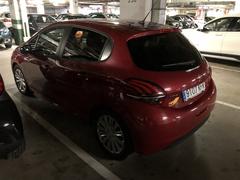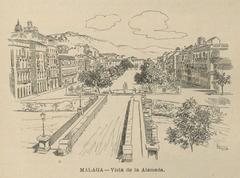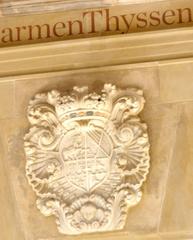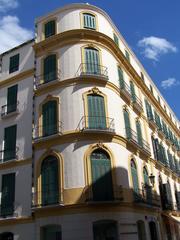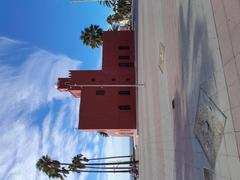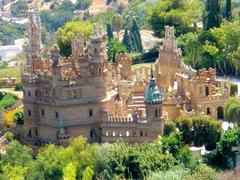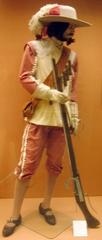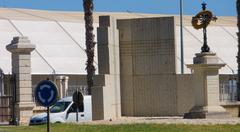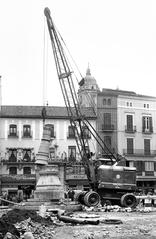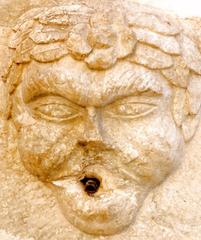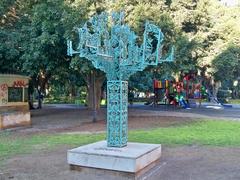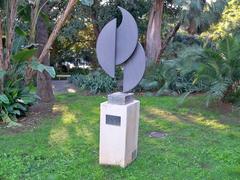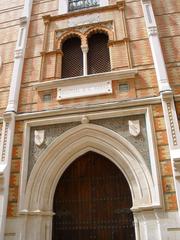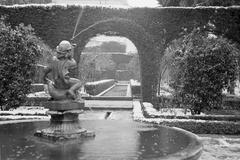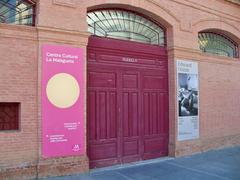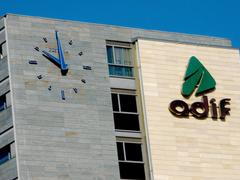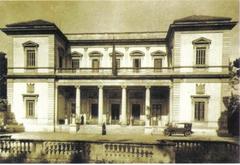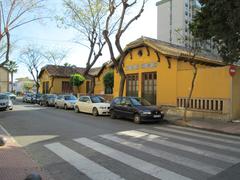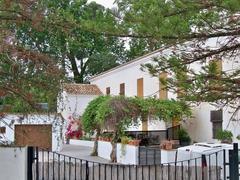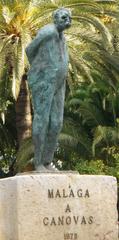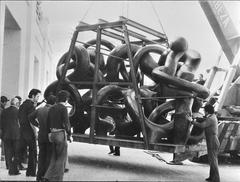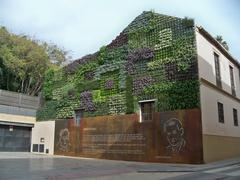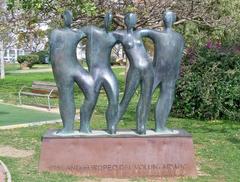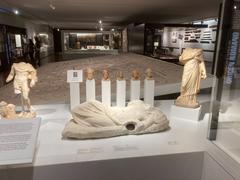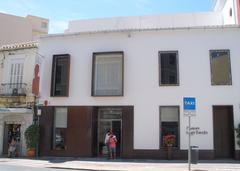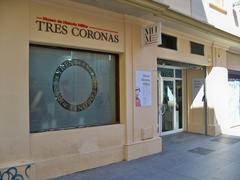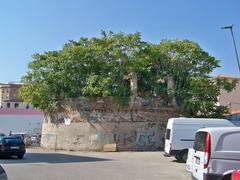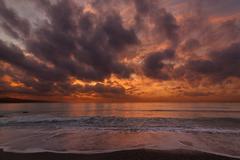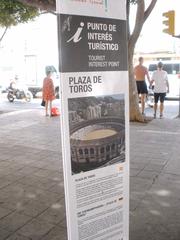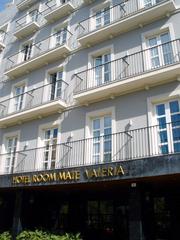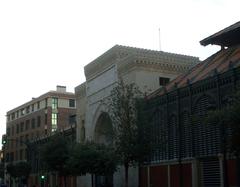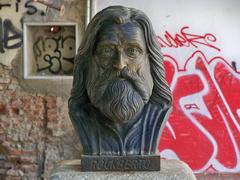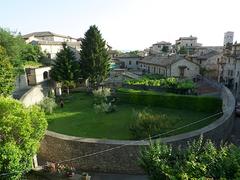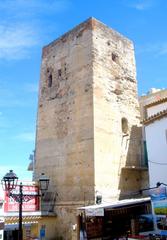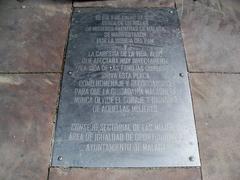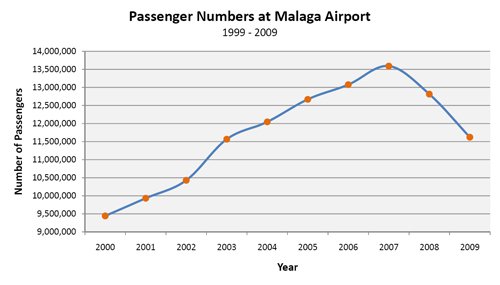
Complete Guide to Málaga Costa del Sol: Visiting Hours, Tickets, and Attractions
Date: 14/06/2025
Introduction to Málaga Costa del Sol: Historical Sites and Visitor Information
Málaga, nestled on Spain’s sun-drenched Costa del Sol, is a destination where ancient history, vibrant culture, and modern attractions converge. As one of Europe’s oldest continuously inhabited cities—founded as Malaka by the Phoenicians around 770 BCE—Málaga boasts a rich tapestry of civilizations, from Roman ruins like the Roman Theatre to Moorish marvels such as the Alcazaba fortress and Renaissance gems like the Málaga Cathedral (“La Manquita”). Today, Málaga is equally celebrated for its world-class museums, including the Picasso Museum, dynamic arts scene in the Soho district, golden beaches, and lively festivals.
To plan your visit, it’s important to know the visiting hours, ticketing options, and accessibility details for sites such as the Alcazaba, Gibralfaro Castle, and major cultural institutions. Spring and autumn offer the most pleasant weather with fewer crowds, while summer is alive with festivals like Feria de Agosto and the Fiesta de San Juan. Málaga’s walkable historic center, efficient public transport, and proximity to attractions like the Caminito del Rey and picturesque white villages make it a perfect base for further exploration.
This guide provides all the essential information—historical background, must-see attractions, practical tips, and up-to-date advice—to help you experience the best of Málaga. For official updates and detailed visitor information, consult sources like visitmalaga.eu, Museo Picasso Málaga, and the Official Málaga Cathedral Site.
Contents
- Introduction
- Exploring Málaga Historical Sites
- Ancient Origins and Early Civilizations
- Roman Theatre
- Islamic Málaga and the Middle Ages
- Alcazaba Fortress
- Gibralfaro Castle
- Christian Reconquest and Renaissance Transformation
- Modernization and Tourism Boom
- Visitor Information for Historical Sites
- Travel Tips
- Accessibility
- Major Attractions and Things to Do
- Landmarks and Architecture
- Museums and Cultural Institutions
- Beaches and Waterfronts
- Natural Wonders and Outdoor Activities
- Traditional Neighborhoods and Experiences
- Festivals and Events
- Family-Friendly Attractions
- Gastronomy
- Practical Tips
- Cultural Highlights
- Museums and Art
- Landmarks and Architecture
- Festivals and Traditions
- Gastronomy and Culinary Culture
- Performing Arts and Flamenco
- Urban Art and Contemporary Culture
- Visitor Information
- Local Customs and Social Life
- Etiquette and Travel Tips
- Day Trips and Regional Culture
- Seasonal Highlights
- Málaga Visiting Hours, Tickets, and Travel Tips
- Best Times to Visit and Local Events
- Historical Sites: Hours and Tickets
- Guided Tours and Tickets
- Transportation and Getting Around
- Accommodation Tips
- Dining and Etiquette
- Local Customs
- Safety and Health
- Money and Payments
- Language and Connectivity
- Accessibility
- Sustainable Tourism
- Useful Resources
- FAQ
- Conclusion
- Sources
Exploring Málaga Historical Sites
Ancient Origins and Early Civilizations
Málaga’s origins date back nearly 2,800 years. First settled by the Bastetani, its true urban development began with the Phoenicians, who established Malaka around 770 BCE, leveraging its strategic Mediterranean port. The city’s name possibly stems from the Phoenician word for “salt,” tied to the local fish-salting industry.
By the 6th century BCE, Málaga came under Carthaginian influence, followed by Roman conquest in 218 BCE. Under Roman rule, Malaca flourished with its own municipal code (Lex Flavia Malacitana), granting citizens privileges and autonomy. The Roman Theatre, from this era, remains a centerpiece of Málaga’s archaeological heritage.
Roman Theatre
- Visiting Hours: Daily, 9:30 AM – 8:00 PM (extended in summer)
- Tickets: Entry included with Alcazaba ticket
- Accessibility: Partially accessible; uneven surfaces
- Nearby: Alcazaba Fortress, Picasso Museum
Islamic Málaga and the Middle Ages
After the fall of Rome, Visigoths and Byzantines held sway until the Moors arrived in the 8th century. Under Islamic rule, Málaga thrived as a trading and cultural hub within Al-Andalus. The 11th-century Alcazaba, one of Spain’s finest Moorish fortresses, stands as a testament to this era.
Alcazaba Fortress
- Visiting Hours: 9:00 AM – 8:00 PM (Apr–Oct); 9:00 AM – 6:00 PM (Nov–Mar)
- Tickets: Combined with Gibralfaro Castle €5; discounts for EU citizens
- Accessibility: Some steep, uneven areas; limited wheelchair access
- Guided Tours: Available in multiple languages
Gibralfaro Castle
- Visiting Hours: Same as Alcazaba
- Tickets: Included in combined ticket
- Accessibility: Steep climb; limited for mobility-impaired visitors
- Highlights: Panoramic views of city and coast
The Christian Reconquest and Renaissance Transformation
In 1487, Málaga was captured by the Catholic Monarchs, ending Moorish rule. The city was integrated into Castile and saw the construction of Renaissance and Baroque buildings, including the iconic Málaga Cathedral (“La Manquita”) and Buenavista Palace.
- Key Renaissance Sites: Sanctuary of Victory, Buenavista Palace, churches of San Juan, Santos Mártires, Santiago
Modernization and Tourism Boom
The 19th century brought industrial growth and new urban avenues. From the 1950s, Málaga and the Costa del Sol transformed into major tourist destinations, balancing heritage with modernity through new museums and revitalized neighborhoods.
Visitor Information for Historical Sites
| Site | Visiting Hours | Ticket Prices | Accessibility | Notes |
|---|---|---|---|---|
| Roman Theatre | 9:30 AM – 8:00 PM | Free with Alcazaba ticket | Partially accessible | Within Alcazaba complex |
| Alcazaba | Apr–Oct: 9 AM–8 PM; Nov–Mar: 9 AM–6 PM | €5 combined with Gibralfaro | Limited wheelchair access | Guided tours available |
| Gibralfaro Castle | Apr–Oct: 9 AM–8 PM; Nov–Mar: 9 AM–6 PM | Included in Alcazaba ticket | Steep terrain | Best city and sea views |
Travel Tips
- Best Time to Visit: Spring (April–June) and Fall (September–October) for mild weather and fewer crowds.
- Tickets: Buy online via official sites or onsite; combined tickets offer savings.
- Guided Tours: Recommended for historical context; available in several languages.
- Nearby Sites: Picasso Museum, Málaga Cathedral, Costa del Sol beaches.
Accessibility
Most historic sites have uneven terrain; contact venues in advance for details. Museums and the Cathedral are generally wheelchair accessible.
Major Attractions and Things to Do
Landmarks and Architecture
Alcazaba of Málaga
- Hours: Daily 9:00 AM – 8:00 PM (Apr–Sep); 9:00 AM – 6:00 PM (Oct–Mar)
- Tickets: Combined with Gibralfaro approx. €5.50; Alcazaba only approx. €3.50
- Highlights: Nasrid walls, gardens, city views
Roman Theatre
- Hours: 9:00 AM – 8:00 PM (summer), 9:00 AM – 6:00 PM (winter)
- Tickets: Included with Alcazaba
- Features: Restored stage, interpretive displays
Málaga Cathedral (“La Manquita”)
- Hours: Mon–Sat 10:00 AM – 6:00 PM; Sun 2:00 PM – 6:00 PM
- Tickets: Approx. €6; rooftop access included
- Accessibility: Wheelchair access; elevator to rooftop
Gibralfaro Castle
- Hours: 9:00 AM – 8:00 PM (summer), 9:00 AM – 6:00 PM (winter)
- Tickets: Combined with Alcazaba
- Features: Military museum, panoramic viewpoints
Museums and Cultural Institutions
- Picasso Museum Málaga: Over 200 works by Pablo Picasso; Opening Hours: Tue–Sun 10:00 AM – 6:00 PM; tickets approx. €9; free Sundays after 6 PM.
- Centre Pompidou Málaga: Tue–Sun 10:00 AM – 8:00 PM; tickets approx. €9.
- Carmen Thyssen Museum: Tue–Sun 10:00 AM – 8:00 PM; tickets approx. €8.
Beaches and Waterfronts
- La Malagueta Beach: Urban beach with chiringuitos; wheelchair accessible
- Playa de la Caleta: Quieter, local atmosphere
- Muelle Uno: Waterfront promenade with shops, restaurants, events
Natural Wonders and Outdoor Activities
- Caminito del Rey: Cliffside walkway; tickets approx. €10, book in advance
- Montes de Málaga Natural Park: Hiking, birdwatching
- Torcal de Antequera and Dolmens: UNESCO site with unique geology and archaeological monuments
Traditional Neighborhoods and Experiences
- Historic Centre: Plaza de la Constitución, Calle Larios, Atarazanas Market, tapas bars
- Soho District: Street art, galleries, cultural events
- White Villages: Day trips to Mijas, Frigiliana, Ronda
Festivals and Events
- Marbella’s Feria de San Bernabé (June)
- Benalmádena’s Feria de San Juan (June 24): Beach bonfires, fireworks
- Feria de Agosto: Major summer festival
- Semana Santa: Easter processions
Family-Friendly Attractions
- Sea Life Benalmádena: Interactive aquarium
- Dolphin Watching: Boat tours from Benalmádena
Gastronomy
- Tapas Tours: Espetos, fried fish, Málaga wine
- Chiringuitos: Beachside seafood dining
Practical Tips
- Best Time: June for festivals; spring and fall for mild weather and fewer tourists
- Getting Around: Walkable center, efficient buses and trains; hop-on hop-off buses available
- Packing: Light clothing, sun protection, comfortable shoes
- Day Trips: Ronda, Nerja, white villages
Cultural Highlights
Museums and Art
Málaga boasts over 30 museums, including the Museo Picasso Málaga, Carmen Thyssen Museum, and Centre Pompidou Málaga. The city’s Soho Arts District is famed for street art and contemporary galleries.
Landmarks and Architecture
From Phoenician origins to Roman, Moorish, and Renaissance landmarks, Málaga’s architecture is a journey through history. Key sites include the Alcazaba, Roman Theatre, Gibralfaro Castle, and Málaga Cathedral.
Festivals and Traditions
Annual highlights include Feria de Agosto, Semana Santa, Málaga Film Festival, and the Fiesta de San Juan.
Gastronomy
Sample regional specialties such as espeto de sardinas, porra antequerana, and fritura malagueña at local markets and beach bars.
Performing Arts and Flamenco
Experience flamenco in tablaos and at the Bienal de Arte Flamenco de Málaga. The Teatro Cervantes and Teatro Echegaray host music, opera, and theater.
Urban Art and Contemporary Culture
The Soho district’s murals and installations highlight Málaga’s creative energy.
Local Customs and Social Life
Embrace the local pace with late-night tapas, evening strolls, and siesta culture. Modest dress is advised for religious sites.
Etiquette and Travel Tips
- Language: Spanish is official; English widely spoken in tourist areas.
- Tipping: Appreciated but not mandatory.
- Dress Code: Smart casual; swimwear for beaches only.
Day Trips and Regional Culture
Explore white villages, Ronda, Caminito del Rey, and the Cueva del Tesoro marine cave.
Seasonal Highlights
Spring and autumn are optimal for a cultural visit. Summer features festivals but higher crowds.
Málaga Visiting Hours, Tickets, and Practical Travel Tips
Best Times to Visit and Local Events
Spring (March–May) and autumn (September–November) offer mild weather and fewer crowds. Summer is ideal for festivals but busiest. Major events like Semana Santa and Feria de Málaga bring unique experiences and larger crowds (My Little World of Travelling).
Historical Sites: Hours and Tickets
- Alcazaba: Tue–Sun, 9:00 AM – 8:00 PM; closed Mon. Tickets: €3.50; combined with Gibralfaro €5.00.
- Gibralfaro Castle: Same hours; included in combined ticket.
- Málaga Cathedral: Mon–Sat 10:00 AM – 6:00 PM; Sun 2:00 PM – 6:00 PM. Tickets: €6.00 (Official Málaga Cathedral Site).
- Picasso Museum Málaga: Tue–Sun, 10:00 AM – 7:00 PM; tickets €12.00; free after 6:00 PM Sundays.
Book guided tours and tickets online for popular sites to avoid queues.
Transportation and Getting Around
- By Air: Málaga-Costa del Sol Airport (AGP), 8 km from city center (Visit Costa del Sol)
- By Train: María Zambrano station connects to Madrid and Andalusia
- By Car: A-7 and AP-7 motorways; car hire recommended for regional exploration (Andalucia.com)
- Local Transport: EMT buses, Cercanías trains, taxis, and bike lanes
Accommodation Tips
- Where to Stay: Centro Histórico for culture, La Malagueta for beaches, Soho for arts
- Booking: Reserve early for festivals and summer; shoulder seasons offer best value
Dining and Food Etiquette
- Meal Times: Lunch 2–4 PM; dinner after 8:30 PM
- Tapas: Share small plates, try local specialties
- Tipping: Optional, appreciated for good service
Local Customs and Etiquette
- Greetings: Handshake or cheek kiss
- Dress Code: Modest for churches, smart casual otherwise (Euronews)
- Gifts: Wine or sweets if invited home
Safety and Health
- Safety: Low crime; watch for pickpockets (The Viva La Vita)
- Beach Safety: Observe flags; swim in designated areas
- Emergency Number: 112
Money and Payments
- Currency: Euro (€); cards widely accepted
Language and Connectivity
- Language: Spanish; English in tourist areas
- Wi-Fi: Available in hotels and cafes; local SIM recommended for data
Accessibility
Many museums and landmarks are accessible; contact venues for specifics. Some historic sites have uneven or steep terrain.
Sustainable and Respectful Tourism
Support local businesses, follow noise regulations, and respect local life.
Useful Resources
- Tourist Office: Plaza de la Marina
- Málaga–Costa del Sol Sightseeing Pass for discounted entry (Travpa)
Frequently Asked Questions (FAQ)
Q: What are the visiting hours for Málaga’s historical sites?
A: Most open between 9:00 AM and 8:00 PM, with seasonal variations. Check official websites for updates.
Q: How can I purchase tickets?
A: Online via official portals or at entrances. Combined tickets offer savings.
Q: Are guided tours available?
A: Yes, for major sites and museums. Advance booking recommended.
Q: When is the best time to visit?
A: Spring and autumn for mild weather and smaller crowds; June for festivals.
Q: Are historical sites accessible for visitors with disabilities?
A: Museums and the Cathedral are generally accessible; some historic monuments have limited accessibility.
Conclusion
Málaga-Costa del Sol invites travelers to experience a seamless blend of history, culture, and Mediterranean lifestyle. With detailed information on visiting hours, ticketing, accessibility, and local customs, this guide ensures you can make the most of your journey—whether you’re exploring ancient fortresses, world-class museums, bustling markets, or relaxing on sunlit beaches. Plan ahead, consider pre-booking tours and tickets, and embrace the vibrant Andalusian spirit for an unforgettable adventure in Málaga.
For the latest updates and resources, use the Audiala app, consult official sites such as visitmalaga.eu, and follow us on social media for insider tips and travel inspiration.
Sources
- Exploring Málaga Historical Sites: Visiting Hours, Tickets, and Cultural Highlights (visitmalaga.eu), 2025
- Major Attractions and Things to Do in Málaga: Visiting Hours, Tickets & Historical Sites Guide (visitcostadelsol.com), 2025
- Cultural Highlights (Museo Picasso Málaga), 2025
- Málaga Visiting Hours, Tickets, and Practical Travel Tips for Costa del Sol (Malaga Cathedral), 2025

